Emergency equipment on public transport
Public transportation offers a safe means of transportation. Nevertheless, nothing can be fully guaranteed. To counter this, modern buses and trains are equipped with a number of safety features to ensure the best possible passenger safety in the event of an emergency. Here you can find out which emergency equipment is available on the buses and trains, and what you should pay attention to when using it.
Just like emergency hammers, first aid kits are an essential part of safety gear on public transportation. Stealing a first aid kit is a major criminal offence. First and foremost, that would be theft. Secondly, and most importantly, a passenger may need to use it during travel due to a fall, for example.
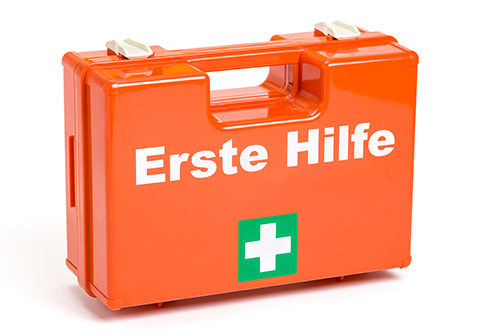
Fire extinguishers are also key safety equipment on public transportation. They can save lives in extreme cases. Please note that fire extinguishers are not toys.
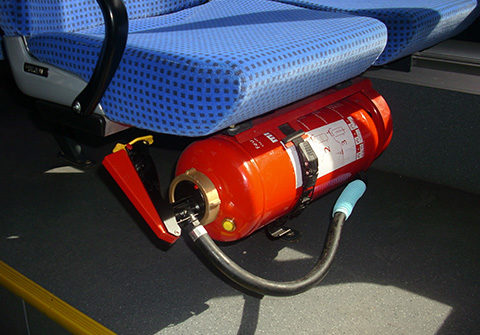
An emergency hammer is part of the safety equipment found on every mode of public transportation. Similarly to the first aid kit, it isn’t a souvenir for your trip or there to be stolen. Stealing an emergency hammer entails facing the full force of the legal consequences related to this offence. When you enter the vehicle, pay attention to where the emergency hammers are located and how they can be used to open the emergency exits in the case of an emergency.
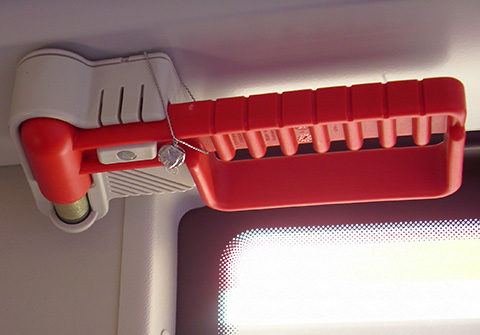
You’re probably familiar with being greeted by flight attendants running through their customer ritual of explaining where the emergency exits are when you fly. But did you know buses also have emergency exits in the roof? When you enter the vehicle, pay attention to where the emergency roof hatches are located and how they can be opened in the case of an emergency.
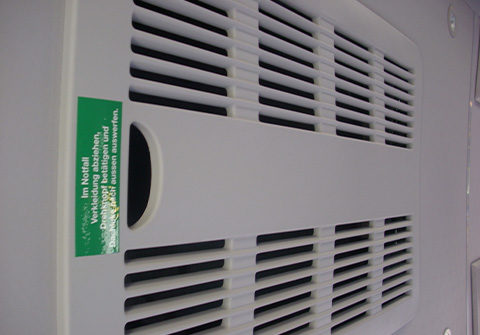
Proper conduct for a safe journey
Public transportation offers a safe means of transportation. Travel is even safer when all passengers observe a few simply rules of conduct. Here you can find out what you need to pay attention to when travelling with bus or train and how to prevent any dangerous situations from occurring.
Even if you prefer to keep talking to your friends while travelling, the safest place on a bus/train is always on a seat. As long as there are seats available, you should use them. If everyone is seated, people getting on and disembarking also won’t need to push through a crowded aisle. It also means seats aren’t kept free for friends who will be boarding soon or used to hold bags. Ideally, only leave your seat to exit once the bus/train has come to a full stop at the station.
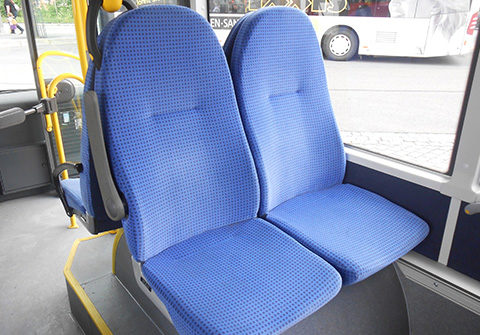
Travelling around curves in the road and coming to an abrupt stop can result in major movement, particularly on buses. If you aren’t holding on tight, you may sustain injuries. In order to prevent this, it’s important to hold on tightly to the attached handles when all seats are taken. A good posture also involves taking off your school bag or backpack and placing it on the floor between your legs so no one is obstructed when getting on or disembarking the bus. Entrance and exit areas cannot be used for standing for the same reason. You also must not lean against doors.
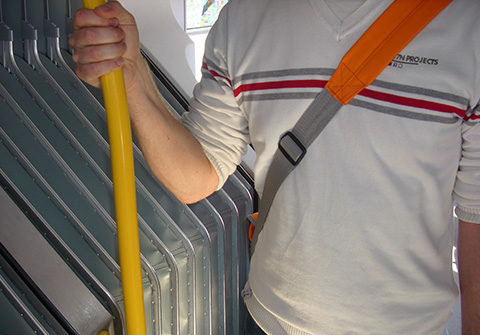
Bags and luggage must not be placed on seats or in the middle of the aisle. When bags are placed on seats, this prevents other passengers from sitting there. In addition, if the bus driver brakes all of a sudden, they may be thrown around the bus. Passengers sat on a seat should either place their bag in front of them on the floor or on their lap. People stood in the aisle should place their bag or luggage on the floor between their legs. This ensures the bag doesn’t get in anyone’s way when they get on or off the bus and it’s safe if the bus driver brakes abruptly. On trains, bags should be placed in the designated compartment.
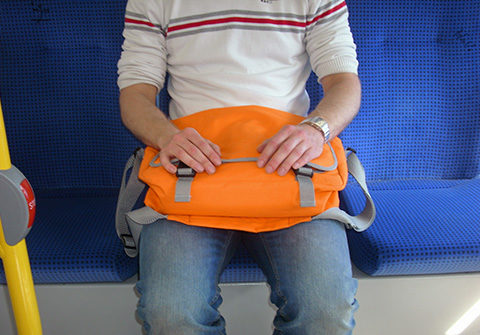
Bikes, prams, wheelchairs, skis and similar items should be stowed in the designated areas on public transportation. They must be secured for transport. Make sure the corresponding areas are cleared before using them. Bikes, roller blades, inline skates and skateboards must not be used on public transportations, on train platforms, at bus stations or in train station buildings.
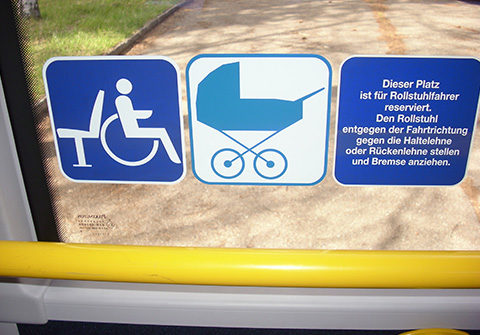
Dogs can be transported when accompanied by a suitable person and on a lead. Dogs that may harm passengers are required to wear a muzzle. Guide dogs for the blind are always allowed to travel. Animals must not be placed on seats.
Children and office workers may feel the need to stretch their legs or stand to talk to friends after sitting for extended periods at school or work. Be that as it may, it is safest to use empty seats and hold on tight when standing. If the public transportation abruptly brakes, centrifugal forces may occur that passengers won’t be able to counteract if they aren’t properly holding on. This can result in dangerous falls. For this reason, it is important to properly stow the bag or piece of luggage you are travelling with.